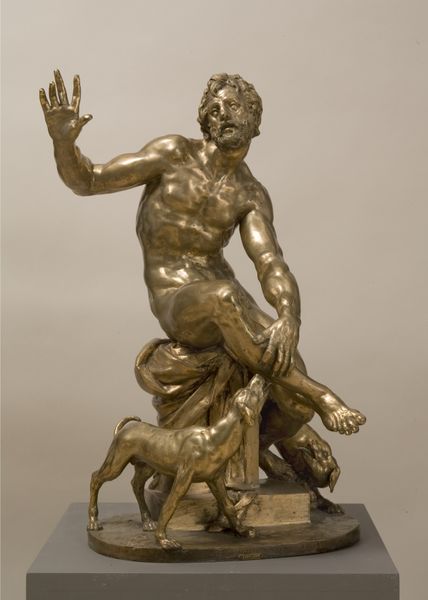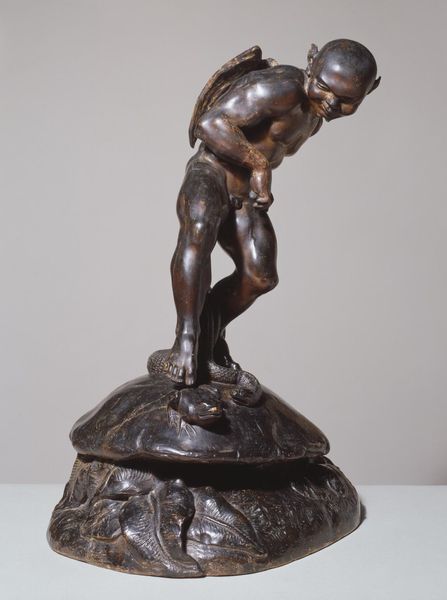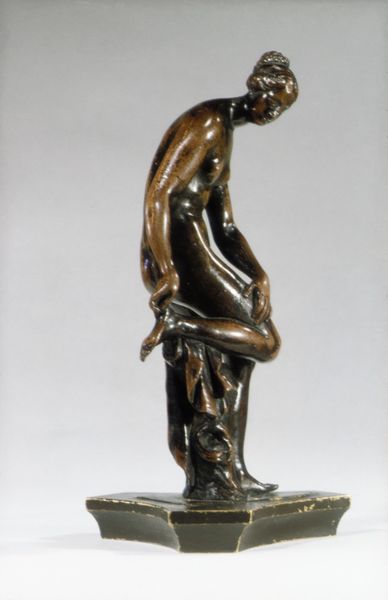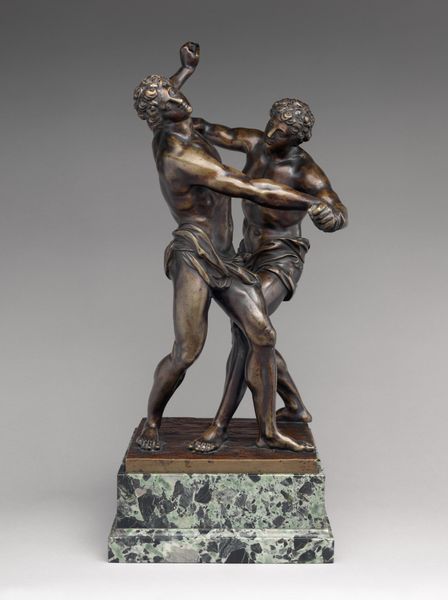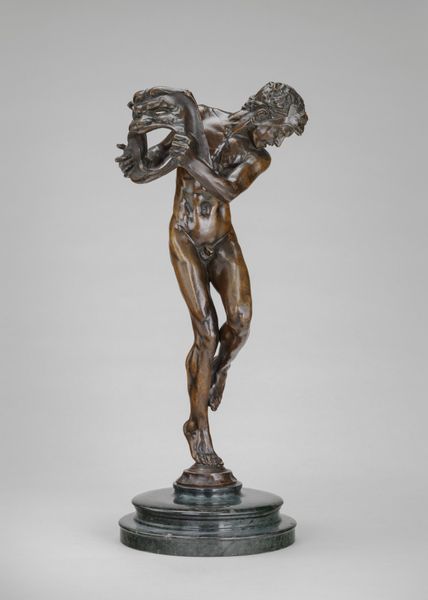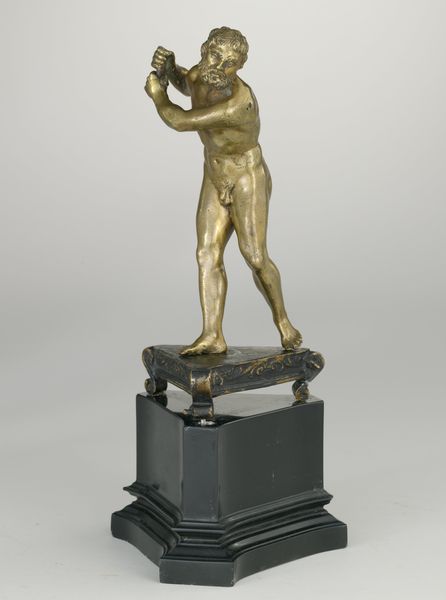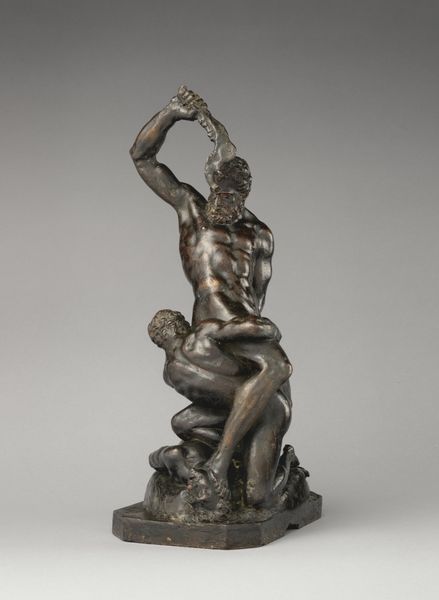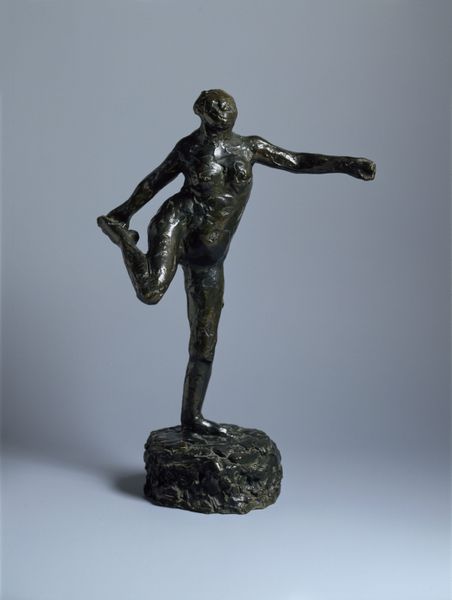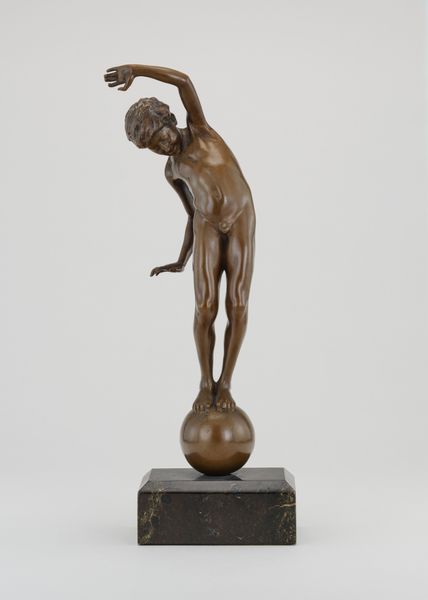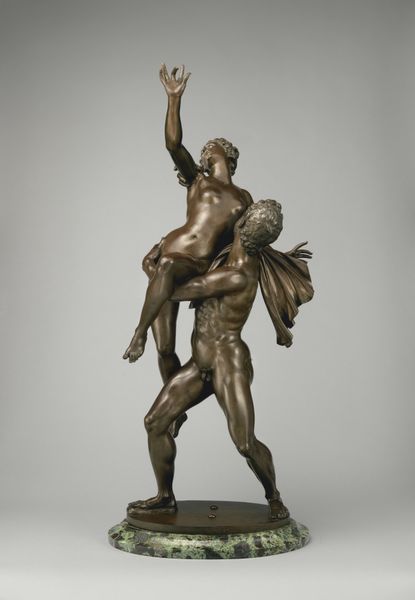
bronze, sculpture
#
sculpture
#
bronze
#
mannerism
#
figuration
#
sculpture
#
history-painting
Dimensions: 70 cm (height) x 21 cm (width) x 26 cm (depth) (Netto)
Curator: This striking bronze sculpture before us, titled "Cain Killing Abel," was masterfully created by Adriaen de Vries around 1622. It’s currently held here at the SMK, Statens Museum for Kunst. Editor: It's viscerally unsettling, isn't it? All that raw power and barely contained fury etched in bronze. You almost recoil looking at it. Curator: De Vries captures that initial biblical moment of fratricide with such unnerving immediacy. It reflects a Mannerist sensibility—exaggerated poses and dramatic tension defining the moment. De Vries definitely had some thoughts here! Editor: The composition feels like a spiraling vortex of rage. Abel is all submission and vulnerable curve as Cain towers, a jagged, muscular extension of his murderous intent. It makes me think about how societal rules fail, you know, and the repercussions on the broader world. Curator: Yes! And that feels connected to de Vries himself. He was working at a time of huge political upheaval and warfare—the Thirty Years' War was unfolding across Europe as this piece came together. This isn't just an artistic endeavor, it's also tied up in his life experience, or what was transpiring around him. Editor: Absolutely, you can't separate this from the religious tensions playing out then, which often spiraled into horrific acts of violence, sometimes even among close kinship, so the reference is right on point. Though it begs the question: Does depicting brutality, even in this allegorical way, perpetuate it somehow, or does it serve as a warning? Curator: The museum's patronage and the wider artistic marketplace always grapple with that moral question, don't they? What are the cultural and didactic aims that inform artistic choices? Do the public connect with them? Does its style feel outdated or newly appealing? These questions shift through the generations. Editor: Right! Because looking at this, knowing its historical context and artistic skill, my immediate feeling remains mostly an unnerving fascination. How far are we, as humans, from those dark, biblical scenes? Curator: Maybe art like this helps us confront that unsettling question directly, or not... I think de Vries succeeds in grabbing the viewer and making us wonder! Editor: Well said, indeed. Food for thought...and maybe some existential dread.
Comments
statensmuseumforkunst almost 2 years ago
⋮
The statuettes Lazarus and Cain Slaying Abel can be viewed equally well from all sides because the figures are twisting - or serpentining - around their own axes. Such serpentinata is a typical feature of Mannerism, a courtly style that de Vries appropriated while studying under the sculptor Giambologna in Florence as a young man. In Denmark, King Christian IV had a penchant for the sophisticated and distinctive Mannerist style. On Danish soil Adrian de Vries is best known for the Neptune Fountain (1615-18), which was commissioned by Christian IV for Frederiksborg Castle in Hillerød. Like the fountain, Lazarus and Cain Slaying Abel were created in de Vries’ old age. Perhaps de Vries even gave Christian IV the statuettes in connection with the commissioning and payment of the Neptune Fountain.
Join the conversation
Join millions of artists and users on Artera today and experience the ultimate creative platform.
